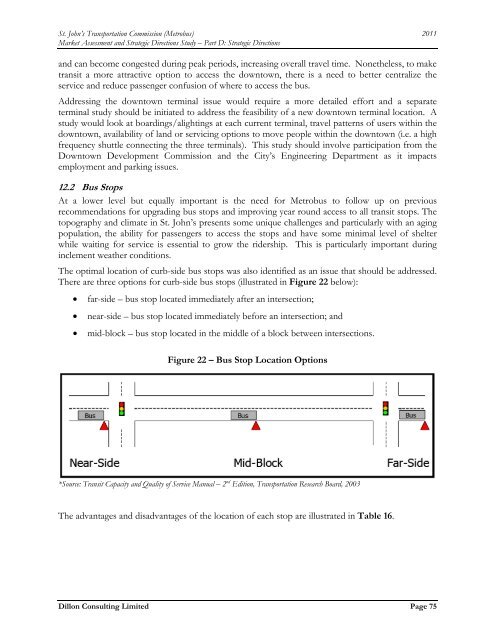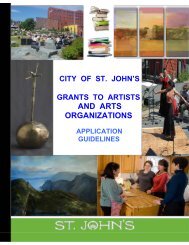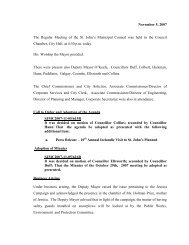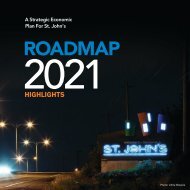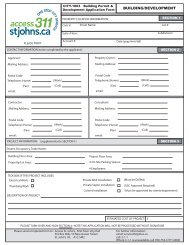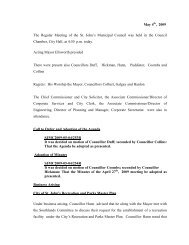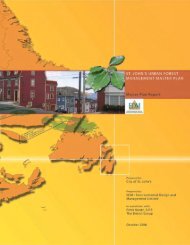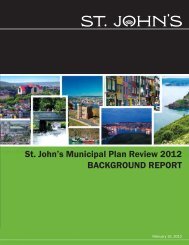Metrobus Transit Study.pdf - City of St. John's
Metrobus Transit Study.pdf - City of St. John's
Metrobus Transit Study.pdf - City of St. John's
Create successful ePaper yourself
Turn your PDF publications into a flip-book with our unique Google optimized e-Paper software.
<strong>St</strong>. John’s Transportation Commission (<strong>Metrobus</strong>) 2011<br />
Market Assessment and <strong>St</strong>rategic Directions <strong><strong>St</strong>udy</strong> – Part D: <strong>St</strong>rategic Directions<br />
and can become congested during peak periods, increasing overall travel time. Nonetheless, to make<br />
transit a more attractive option to access the downtown, there is a need to better centralize the<br />
service and reduce passenger confusion <strong>of</strong> where to access the bus.<br />
Addressing the downtown terminal issue would require a more detailed effort and a separate<br />
terminal study should be initiated to address the feasibility <strong>of</strong> a new downtown terminal location. A<br />
study would look at boardings/alightings at each current terminal, travel patterns <strong>of</strong> users within the<br />
downtown, availability <strong>of</strong> land or servicing options to move people within the downtown (i.e. a high<br />
frequency shuttle connecting the three terminals). This study should involve participation from the<br />
Downtown Development Commission and the <strong>City</strong>’s Engineering Department as it impacts<br />
employment and parking issues.<br />
12.2 Bus <strong>St</strong>ops<br />
At a lower level but equally important is the need for <strong>Metrobus</strong> to follow up on previous<br />
recommendations for upgrading bus stops and improving year round access to all transit stops. The<br />
topography and climate in <strong>St</strong>. John’s presents some unique challenges and particularly with an aging<br />
population, the ability for passengers to access the stops and have some minimal level <strong>of</strong> shelter<br />
while waiting for service is essential to grow the ridership. This is particularly important during<br />
inclement weather conditions.<br />
The optimal location <strong>of</strong> curb-side bus stops was also identified as an issue that should be addressed.<br />
There are three options for curb-side bus stops (illustrated in Figure 22 below):<br />
<br />
<br />
<br />
far-side – bus stop located immediately after an intersection;<br />
near-side – bus stop located immediately before an intersection; and<br />
mid-block – bus stop located in the middle <strong>of</strong> a block between intersections.<br />
Figure 22 – Bus <strong>St</strong>op Location Options<br />
*Source: <strong>Transit</strong> Capacity and Quality <strong>of</strong> Service Manual – 2 nd Edition, Transportation Research Board, 2003<br />
The advantages and disadvantages <strong>of</strong> the location <strong>of</strong> each stop are illustrated in Table 16.<br />
Dillon Consulting Limited Page 75


